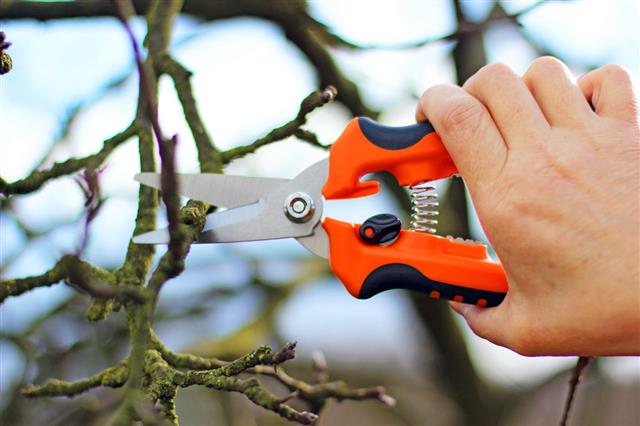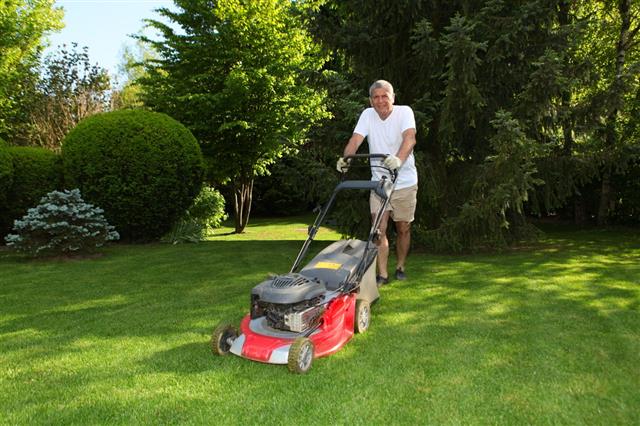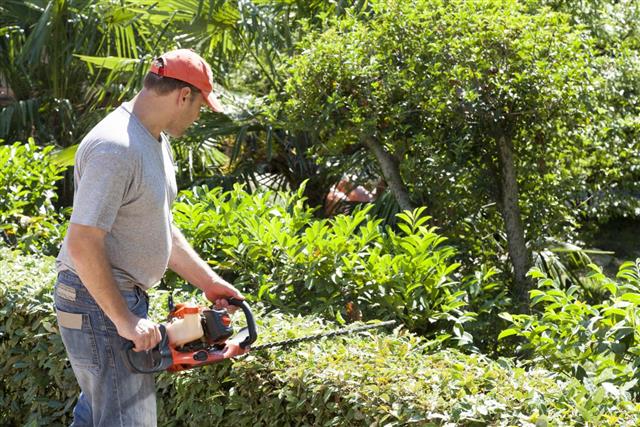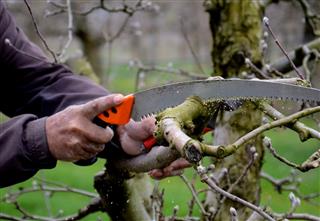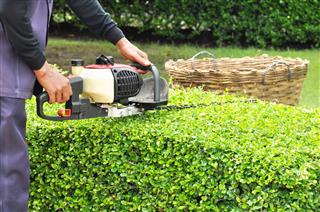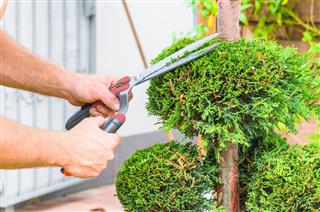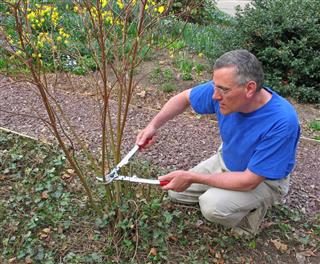
Burning bushes have great fall foliage, and are low on maintenance. Pruning these bushes can be done in many ways.
Burning bushes are very popular choices for deciduous landscapes. They have deep emerald-colored leaves, and one doesn’t need to pay much attention to these shrubs. Burning bushes (Euonymus alatus) are of two types. The first is the dwarf variety which has slightly arched branches and looks graceful. The dwarf variety is not actually dwarf-sized and can grow up to 6 feet, but it is called so because it is smaller compared to the common variety. These common variety ones can grow over 15 feet, so regular pruning is required. The good news is that burning bushes can be pruned in any shape and can be cut down to a fairly small height.
When to Prune It?
Try to figure out what you would like the average size of the bush to be and prune it to that size, after measuring it with a tape. After some pruning sessions you will get a fair idea about when and how much to prune the bush.
- You can prune these bushes during any time of the year that you think is suitable.
- If you think they have become too big and their size is hindering the other trees or plants, it is time to trim them.
- If the burning bush in your garden has become so big that it blocks your garage door or a path, you can use shears and trim it.
- Burning bush turns bright red in autumn and looks stunning. It is best to prune the bush when it is young.
- If you are planning on extreme/rejuvenating pruning then you should do it during early spring. This way you can avoid the mess, as you will be finishing pruning before any new growth starts.
- However, if you are trimming the bush for a particular shape then do it when it is dormant, which is during early spring or late winter.
How to Prune It with Tips
Burning bushes are tough and can sustain a lot of hard pruning. One doesn’t need to be an expert at pruning, when it comes to this bush. All you need is a garden tool like good shears, and a ladder, in case of overgrown bushes. If you are pruning these bushes then you can give it a variety of shapes, like rectangle, square, globe or even tree-like. Square or rectangular shape are not the natural shapes, so try to give the bush a globular shape.
Tree-like Shape
You can also cut the bush into a natural looking tree shape.
- For this shape, take some hedge shears and keep some of the vertical branches (up to the height of 5 – 7 feet) bare.
- You can do this by removing the smaller branches and all the leaves on the sides.
- The upper levels of the bush (after 5 – 7 feet height) can be pruned in a semi-circular shape.
Globe Shape
The best shape to give a burning bush is the globe.
- First of all, remove all the unhealthy, diseased and damaged branches of the burning bush.
- Then pick a central branch which can act as the main trunk.
- Select some of the side branches and trim out the excess branches.
- Now, to give it a perfect globular shape, trim the edges of the branches that you have selected.
Extreme/Rejuvenating Pruning
Many times gardeners tend to go for extreme or rejuvenating pruning to improve the health of the bush.
- Simply, cut the bush down to 5 – 10 inches from the ground.
- This method may sound extreme, but it forces sick bushes to grow better.
- Also, this type of pruning helps in case of overgrown bushes and makes their growth more manageable.
Useful Tips
Apart from following the right time and shape while pruning, here are some important instructions that you should keep in mind.
- Remember to make cuts at 45° angle when pruning. This angle helps to control the growth better.
- These bushes grow at an alarmingly fast rate. So, if you wish to avoid pruning it, transplant it to a place where it can grow as big as possible.
- Burning bush forms monoculture (plant culture resulting from growth of only one type of plant), and competes with other native plants. So, if you are planning to plant these bushes, ensure that you know whether or not they will interfere with the growth of native plants.
- You can also replace the bush with some other plants like oakleaf hydrangea, sumac or chokeberry.
These bushes look amazing in fall when they turn red, however to maintain them one needs to trim them regularly. Therefore, try to either plant very few burning bushes or plant other alternative fall plants.
